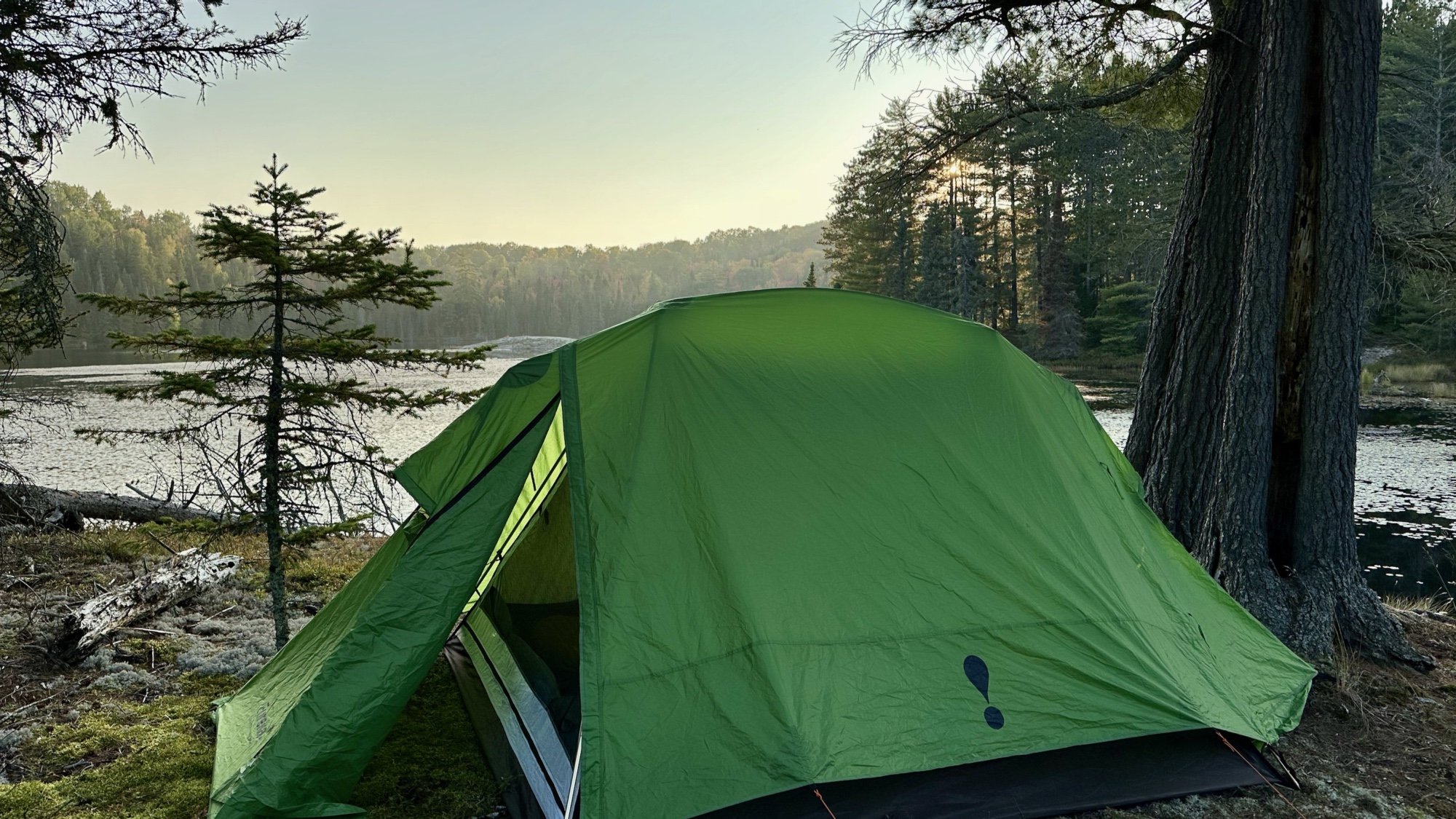Health Canada Reassessing Flame Retardants In Tents

For campers who didn’t know about proper tent placement on a campsite, It wouldn’t take much more than a stray ember from your campfire or a cooking stove placed too close to cause a tent to melt or possibly catch on fire. To help protect Canadians from injuries or deaths the Tents Regulations was created under the Canada Consumer Product Safety Act (CCPSA) back in 1998. At the time, tents were typically made of paraffin-coated (wax) cotton canvas and some could burn to the ground in less than a minute.
A lot has changed since then and tents are now usually made from synthetic lighter-weight materials with different burning properties. Most also have flame retardants added to the material to prevent accidental fires but in turn some tests are showing that these retardants are quite toxic and known carcinogens.
The requirement for these retardants in Canada (and similarly many U.S. States) prevents some manufacturers from selling their tents here. Hilleberg, Fjällräven and many European companies haven’t been able to enter the Canadian market despite doing well in Europe where these rules don’t exist.
Mountain Hardwear has recently announced that all new tents will no longer use chemicals…
“The tent flammability standard that often necessitates the use of fire retardant chemicals—some of which are highly toxic compounds—is based on a decades old rule that was developed to protect against highly flammable paraffin-coated cotton circus tents. We’re challenging the value of applying this outdated standard to our tents in the interest of sustainability and our consumer’s health. We are eliminating their use from all future Mountain Hardwear tents.”
Earlier this year, Health Canada consulted with Canadians and key stakeholders on a proposal to amend the Tents Regulations, with consequential amendments to the Toys Regulations. They consulted with…
industry and industry associations (tents, tent trailers, toys, play tents, dining shelters, gazebos, camping, backyard living, outdoor living, outdoor recreation and sporting goods)
consumer advocacy groups
fire safety professionals
testing laboratories
general public
The consultation closed March 23rd, 2019 and they are in the process of assessing the comments that were received. They are now determining whether to proceed with the regulatory amendment which would update the flammability and labelling requirements set out in the Tents Regulations with requirements set out in a new National Standard of Canada entitled CAN/CGSB-182.1…
Prohibiting or restricting the use of chemical flame retardants (FRs) in tents under the Tents Regulations, and in play tents and possibly other toys subject to flammability requirements under the Toys Regulations, including dolls, plush toys and soft toys. FRs prevent or slow the start and spread of fire, and tent manufacturers commonly use FRs to comply with the current flammability requirements. However, handling an FR-treated tent has been shown to result in dermal exposure to the FR, and inhalation exposure is likely to occur while a person is inside a tent. Exposure to some FRs has been associated with adverse health effects. A number of stakeholders have contacted Health Canada to express concerns about using FRs in tents to meet flammability requirements.
One objective of the CGSB tent committee was to develop a tent flammability standard that would eliminate or greatly reduce the use of FRs while continuing to protect consumers from the risk of tent fires. Preliminary testing by Health Canada's Product Safety Laboratory using a number of common tent materials, with and without FR treatment, has shown that the flammability requirements proposed under CAN/CGSB-182.1 are likely to be met without FR use.







